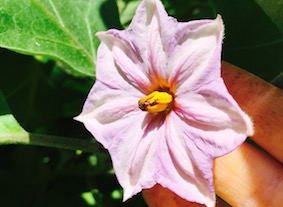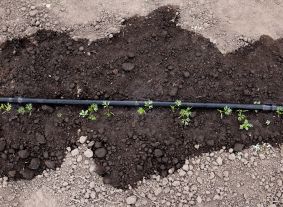Your Vegetable Garden Needs Pollinators
Views: 4654

News flash: You and your family are not the only ones benefiting from the crops growing in your vegetable garden. It turns out there are a ton of other critters sipping nectar. They’re stealing pollen all in the name of survival for themselves.
From apples to zucchini, pollinators are critical for a bountiful fruit and vegetable harvest from your garden. Without pollinators—from butterflies and moths to bumblebees and hummingbirds—doing their thing and transferring pollen from flower to flower, the chances of flowers developing into plump strawberries or tasty tomatoes is very low.
In fact, according to the National Pollinator Garden Network, pollinators are responsible for one in every three bites of food that Americans eat each day. Anything we can do to help them survive is critical not only to the survival of the pollinators’ populations. This ranges from providing more green space to planting plants they can feed on. It’s also critical to our food supply. There’s a distinct touch of compassion in the thought that by providing pollinators with food we’re actually giving back to ourselves. Doing good for others does good for ourselves.
Here are a few ideas for benefiting pollinators in your fruit and vegetable garden this season:
Plant flowers near your vegetable garden
With a few exceptions, vegetable plants don’t have the bright and showy flowers that pull in passing pollinators. Native flowering perennials and shrubs will be and sunflowers are also pollinator favorites. Check with your local garden center for suggestions for the best pollinator-attracting plants for your area.
Herbs do double duty
Many herbs, like lavender and rosemary, are a win-win option: they are prized by cooks, and they also support pollinators.
Plant in groups
Choose one type of flower and plant them in a group covering 10 sq. ft. or more. This increases the chances pollinators will see them and drop in for a visit. Make the flower plantings suitable for pollinators by situating them in a sunny place. You want them to have minimal disturbance from wind and foot traffic.
Provide shelter for pollinators in your Vegetable Garden
Encourage pollinators to live nearby so they visit often. Beehives are just one option. Many pollinator species create tunnels and nests underground or in trees. Leave a patch of bare ground for pollinators to dig nests, and provide a wood block drilled with small holes for those tunneling insects.
I’d like to thank the National Pollinator Garden Network for bringing this topic to my attention. So, rather than swatting bees away and discouraging nesting near your garden, welcome these important creature in to benefit both of you. And while you’re at it, you can register your own pollinator-friendly garden to be counted toward the Million Pollinator Garden Challenge—an effort to plant and catalog one million pollinators by the end of 2017. The Challenge is just one way folks are taking action to support a White House initiative to promote the health of pollinators. It’s good work they are doing!
Register your garden and learn more about the effort at www.millionpollinatorgardens.org.
Meet Ellen Wells
When you’re raised on a farm, you can’t help but know a thing or two about gardening. Ellen Wells is our expert on edible gardening.…
Ellen's Recent Posts

Asparagus






